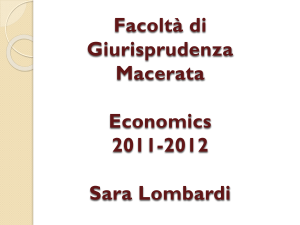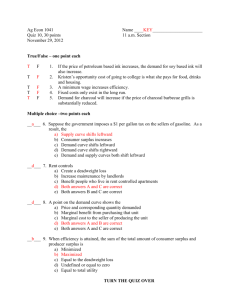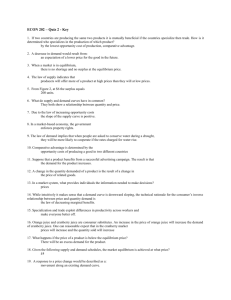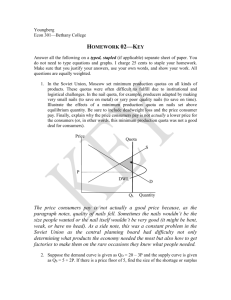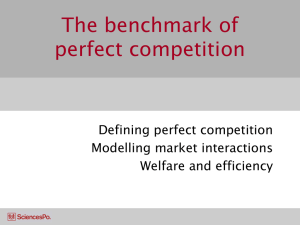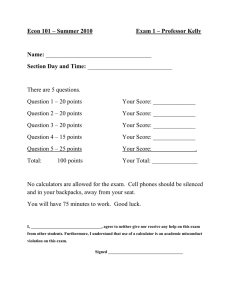Review guide - Shana M. McDermott, PhD
advertisement
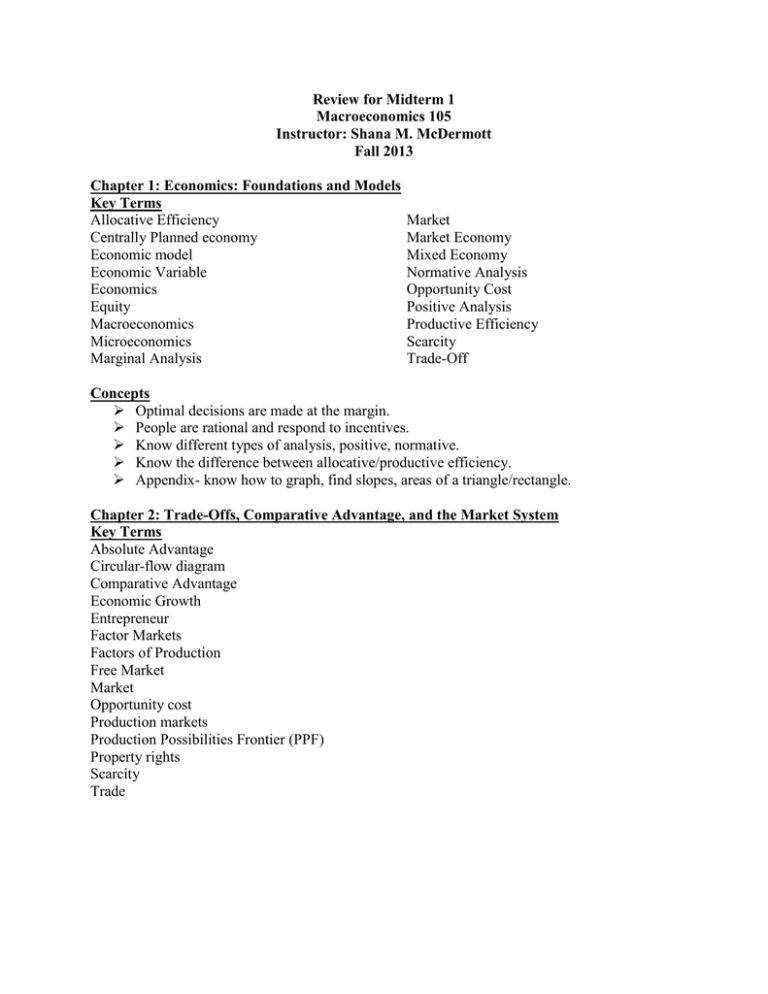
Review for Midterm 1 Macroeconomics 105 Instructor: Shana M. McDermott Fall 2013 Chapter 1: Economics: Foundations and Models Key Terms Allocative Efficiency Centrally Planned economy Economic model Economic Variable Economics Equity Macroeconomics Microeconomics Marginal Analysis Market Market Economy Mixed Economy Normative Analysis Opportunity Cost Positive Analysis Productive Efficiency Scarcity Trade-Off Concepts Optimal decisions are made at the margin. People are rational and respond to incentives. Know different types of analysis, positive, normative. Know the difference between allocative/productive efficiency. Appendix- know how to graph, find slopes, areas of a triangle/rectangle. Chapter 2: Trade-Offs, Comparative Advantage, and the Market System Key Terms Absolute Advantage Circular-flow diagram Comparative Advantage Economic Growth Entrepreneur Factor Markets Factors of Production Free Market Market Opportunity cost Production markets Production Possibilities Frontier (PPF) Property rights Scarcity Trade Concepts Be able to explain opportunity costs. Be able to graph PPF. Be able to find comparative advantage (slopes) and show the trade-offs. Be able to explain increasing opportunity costs. Show economic growth on the PPF (shift out of PPF, can sometimes just pivot). Find the gains from trade. Be able to show and describe how the circular-flow diagram works. Why are property rights/entrepreneurs so important? Chapter 3: Where Prices Come From: The Interaction of Supply and Demand Key Terms Ceteris Paribus Competitive market equilibrium Complements Demand curve Demand schedule Demographics Income effect Inferior good Law of demand Law of supply Market demand Market equilibrium Normal good Perfectly Competitive Market Quantity demanded Quantity supplied Shortage Substitutes Substitution effect Supply curve Supply schedule Surplus Technological change Concepts Explain what causes a shift of the demand curve and what causes a movement along the demand curve. Explain what causes a shift of the supply curve and what causes a movement along the supply curve. Explain the law of demand/supply. Be able to graph the supply/demand curves and show equilibrium. Be able to show how the equilibrium changes when curves are shifted. Calculate the surplus/shortage if the market isn’t in equilibrium. Chapter 4: Economic Efficiency, Government Price Setting, and Taxes Key Terms Black market Consumer surplus Deadweight loss Economic Efficiency Economic surplus Marginal benefit Marginal cost Price ceiling Price Floor Producer Surplus Concepts Be able to calculate consumer surplus/producer surplus if you are given a graph. MB=MC Calculate deadweight loss. Be able to graph and calculate the effects of price ceilings and price floors. Explain what the differences between the two are.

